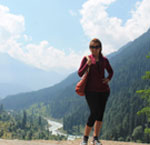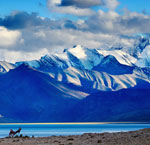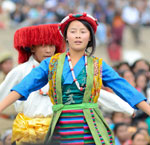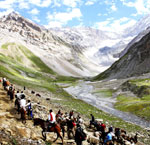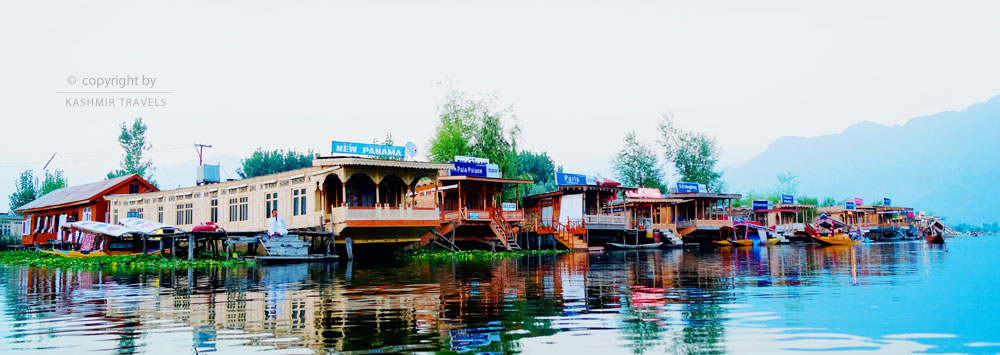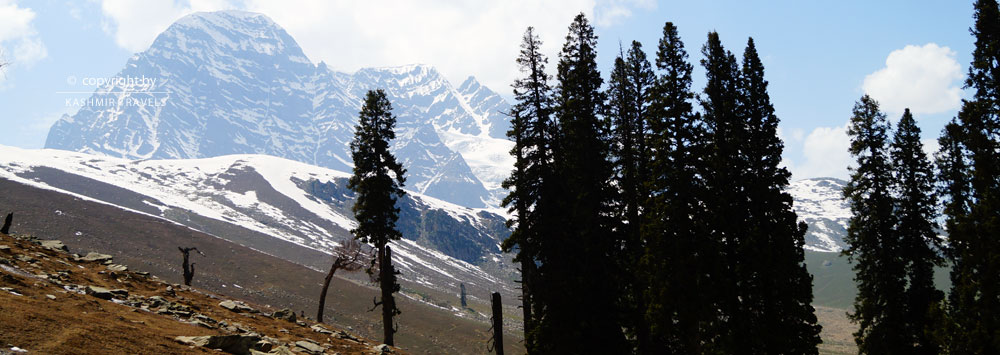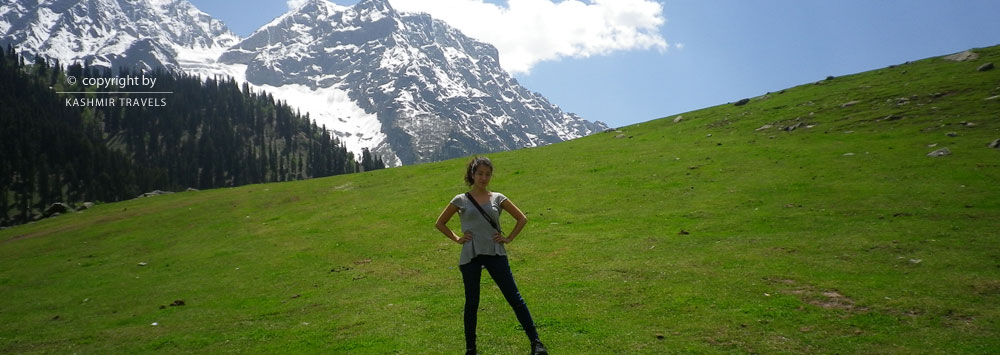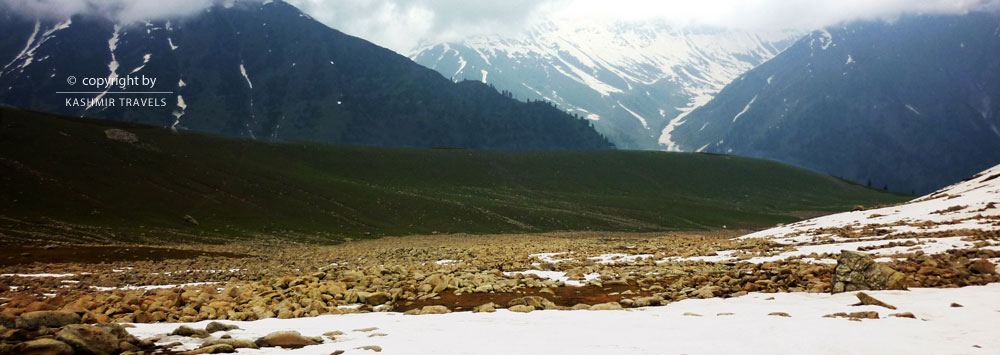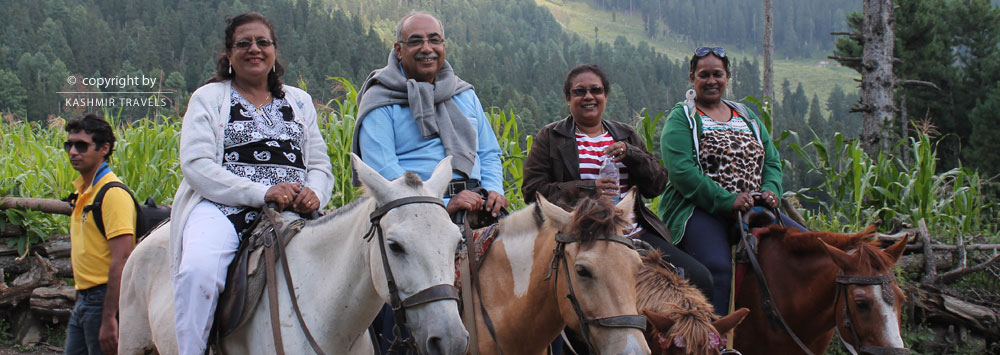When to Go
CLIMATE OF JAMMU KASHMIR

Why Jammu Kashmir is the Ideal Vacation Destination for Everyone
The state of Jammu and Kashmir is divided into three separate climate zones: the subtropical Jammu region; the temperate Kashmir valley; and the arctic cold deserts of Ladakh. The mountains that surround Jammu and Kashmir have a significant impact on its climate. These mountains and the bodies of water significantly reduce the temperature. Because of the fluctuating topography, all three divisions of Jammu and Kashmir have diverse environments.
CLIMATE OF JAMMU :
The hilly region of the Jammu and Kashmir Division has a completely different climate and weather than the plain parts. The rough topography and slope aspects of the mountainous regions, such as the Pir Panjal Range of the Lower Himalayas and the snow-covered peaks of the Greater Himalayas, have a direct impact on the temperature and precipitation. The Jammu region is subtropical. There are differences in the climate throughout the division. The climate in the southern plains is comparable to that in the Punjab. There are rainy seasons throughout the scorching summers. The winters are mild. The weather in the mountainous areas is comparable to that in Kashmir. These areas experience snowfall. Seasonal winds from the Mediterranean Sea also have an impact on the climate in the division. During the rainy season, the temperature drops, but the humidity level doesn't. Out of all the three Kashmiri divisions, Jammu is the hottest. The typical temperature during the height of summer may reach 38°C. The Jammu Division can be divided into two parts according to climate, namely,
a) The Siwalik Mountains' southern plains, and
b) The mountainous region in the districts of Doda, Rajauri, Poonch, and Udhampur spanning the Middle and Greater Himalayas.
A rhythm of seasons that is brought on by the reversal of winds in the form of the south-west and north-east monsoons characterises the climate of the plain region and the Middle Himalayas, including the Pir Panjal. March marks the beginning of the warming season in the plains and lower Himalayan ranges.
A refreshing night-time breeze from the Siwalik Mountains, known locally as Dadu, blows across Jammu City and its surroundings during the summer. The summertime breeze, which consistently blows from west to east, changes from a cool morning breeze to a warm one around 10 a.m. and a hot one at noon. This sweltering local breeze is referred to as "Loo''. The land becomes dry as a result of the Loo's (hot wind) impact. The green vegetables wither, and crops used as fodder, such as Berseem and Ruzka orchards, maize, fodder, sugarcane, and vegetable fields, are frequently irrigated to protect them from the intense heat.
The plain regions of Jammu see the coldest temperatures in January, with the average monthly temperature 13°C .The morning hours of December, January, and February are quite prone to frost, fog, and mist. The Siwaliks and the Nawanchoch mountains near the plains serve as a defence against the chilly, dry winds coming from the north. The orientation of the valleys, whether longitudinal or transverse, has a big impact on the weather in general. Ramban Town, which is located on the right bank of the Chenab and surrounded by desolate, dark-colored rocks, experiences greater temperatures as a result of these conditions. The hilly region experiences rainfall practically every month of the year, with July and August being the wettest months. In fact, the Barsat season is when all rainfall recording stations in steep and mountainous locations record around 75% of the excess yearly rainfall (general rains).
Three seasons have been established in the area based on the distribution of temperature and annual rainfall.
WINTER SEASON:
January is the coldest month of the season. Mist and fog are common. Westerly winds, sometimes known as template cyclones, bring rain to the area during the winter. The Mediterranean Sea is the source of these winds.
SUMMER SEASON:
The temperature in Jammu climbs suddenly starting in March and reaches its peak in May and June, when it frequently reaches about 38 degrees Celsius. Dust storms can occasionally blow which bring drizzles.
RAINY SEASON
Jammu receives its first monsoon rains in the middle of June. Although monsoon rains lower the temperature, the humidity stays high.
CLIMATE OF KASHMIR:
The climate is arguably at its best in Kashmir. The Himalayas, neighbouring mountains, and other bodies of water all have a significant role in regulating its climate. Every season is mild and lovely.With the imposing Karakoram Range in the north, Pir Panjal Range in the south and west, and Zanskar Range in the east, the Kashmir Valley has a mild climate that is mostly determined by its position. The coldest months are December and January (mean minimum temperature 15 °C, mean maximum temperature 0 °C), with maximum temperatures reaching 32 degree celsius.In general, the climate can be characterised as cool in the spring and the fall, warm in the summer, and frigid in the winter. The weather is frequently cooler in the steep portions compared to the flat lower parts because the valley is a vast one with substantial differences in geo-location among distinct districts. Hilly locations can see winter temperatures as low as -15°C, while the lowlands experience a more favourable -5°C to -8°C. °C.Although the Kashmir Valley has a temperate climate, the weather can change quickly.
The hottest month is July, with temperatures in the plains rising to just above 30°C while remaining relatively cooler in the upper reaches. Chinar trees provide relief from the heat in the plains. Warm days and chilly nights characterise autumn and spring. Kashmir receives precipitation in the spring season.The climate of Kashmir was accurately described by the eminent Arab geographer, Alberuni. He asserted that as the dense clouds approach the southern highlands of Kashmir, the mountain sides push back against them, forcing the clouds downward like olives or grapes. Rain never reaches the mountains as a result of the constant downpour. Varsakala is therefore replaced with Kashmir, where it snows continuously for two and a half months.
The cool summers in Kashmir are a result of the valley's high elevation. Mirza Haider Dughlat had nothing but admiration for Kashmir's climate. He said, "I have not heard of or visited a country that compares to Kashmir for the charm of its climate across the four seasons." Abul Fazal claims that Kashmir's climate is refreshing and compares the region's rainfall and snowfall to those of Turkestan and Persia.
Sir Allama Muhammad Iqbal remarks about the land that "Any burned creature that enters Kashmir, even a roasted bird, will develop feathers and become a bird." The winds which often blow can be categorised as Vija waw (northeastern winds), Kamraz (northwestern winds), Nat (western winds), Sindabaat (eastern winds), Banihal (southern winds), and Nagaken (northern winds). Any burnt creature entering Kashmir, even a roasted fowl, shall grow fowl, it shall grow feathers. From December to March, when temperatures are at their lowest, it draws precipitation from the west, most of it in the form of snow, which covers the valley and hills nearby. Hassan Khuihami divides Kashmir's climate into four seasons:
1.Spring (Chhatar, Besakih, and Jaith months; or March, April, May):
This season has a pleasant climate and fresh air. Seasonally, there is a lot of rain, which results in an abundance of flowers and greenery.
2.Summer (Har, Sawan, and Badon months, or June, July, and August ):
This is Kashmir's hottest time of year. During prime time, the temperature frequently rises above 36 degrees. The nights are brief and the days are long. The heat progressively diminishes throughout this season, and the rains are frequently accompanied by hail and lightning. In the summer, the days are long and the nights are short.
3. Autumn (Asuj, Katak, and Magar months, or September, October, and November)
Harvesting takes place in Kashmir during the autumn season, and the air becomes drier. Fruits and crops are ripening during this time. Autumn presents a beautiful view as the trees lose their leaves, particularly the Chinese maples.
4. Winter (the months of Poh, Magh, and Phagun, or December, January, and February)
This time of year is frigid everywhere. When the temperature reaches the freezing point, the water in lakes and rivers freezes. Rows of cylindrical-shaped icicles grow alongside the house roofs' skirts.To protect themselves from the cold, the locals dress in woollen clothing and a long robe called " pheran".A portable fire pot called ``Kangri'' is also used.
The weather in Kashmir is characterised by abrupt fluctuations and is encircled by high mountain ranges and snow-capped peaks. The south-western Pir Panjal range, which borders the valley, makes it difficult for the south-west monsoons to penetrate the valley. From December 22 to February 28, severe cold is experienced for a total of around 70 days.
40 days at Chillai Kalan, from December 21 to January 31.
Chillai Khurd for 20 days, from February 1 to February 20.
For the last 10 days of February, Chilla Bacha for 10 days
CLIMATE OF LADAKH:
The coldest region of the three is Ladakh. The Ladakh Division has a distinctive climate because of its location, primarily to the north of the Greater Himalayas. The weather is extremely dry. The area has a protracted and harsh winter with lows of more than 40 degrees below zero. To the surprise of onlookers, the River Zanskar, with its swift and turbulent waters and massive waterfalls, freezes completely.
One of the coldest inhabited spots on Earth is Drass in Ladakh. Due to excessive snowfall, Ladakh is blocked off for the majority of the year. Summertime temperatures, on the other hand, surge to a scorching 45 degrees. Summer typically lasts from May till the end of August. The best time of year to visit Leh is during the summer when the sky is clear and the mountains can be seen in all their glory. Since the entire region is still isolated from the rest of the nation by road, the territories on the north flank of the Himalayas—Dras, the Suru valley, and Zanskar—experience severe snowfall and are cut off from the rest of the region for many months each year. The final week of April or the first week of May sees the majority of highways open.
The temperature ranges from a comfortable 16°C during the day to 3°C at night. Typically, the winter season lasts from October until May. The temperature drops considerably below zero degrees Celsius during this time of year, and the entire region is covered with snow. Leh, Kargil, and Dras in Ladakh have peak winter temperatures of -3 and -5 degrees Celsius, respectively. From December to February, temperatures are in the negatives for over three months. Drass and Rupsho experience the lowest wintertime temperatures . Tansktse, Rong, and Zanskar also have cold temperatures, whereas Nubra Valley and central Ladakh are somewhat warmer. The temperature of Ladakh varies dramatically during the day and year, with an average annual temperature that is noticeably high.
The temperature ranges between 20 °C and 25 °C during the summer months. The diurnal temperature range varies between 10° and 20°C in the winter. The relative humidity in Ladakh stays low all year long. The typical relative humidity fluctuates between 30% in June, the driest month, and 60% in January and February, the wettest months. Low levels of snow and rain are present.
The winds are often low and vary according to the local direction leading to the Khardung Pass; the most frequent directions are from the south and west during the day in the summer and from the north-east during the night, particularly in the later months of the year. In Ladakh, the rate of evaporation is typically higher than the rate of precipitation. In the winter, snowfall is extremely common at high altitudes.Ladakh is located at a high elevation. Therefore, if you are travelling to Ladakh you need to acclimatise to the surroundings, so it is generally better to spend a day or two at locations with a comparatively lower altitude.
CIN : U63040DL2008PTC177736 Government of India
Reg No : Reg/2019/DT/42/l-2 Government of J&K Tourism

